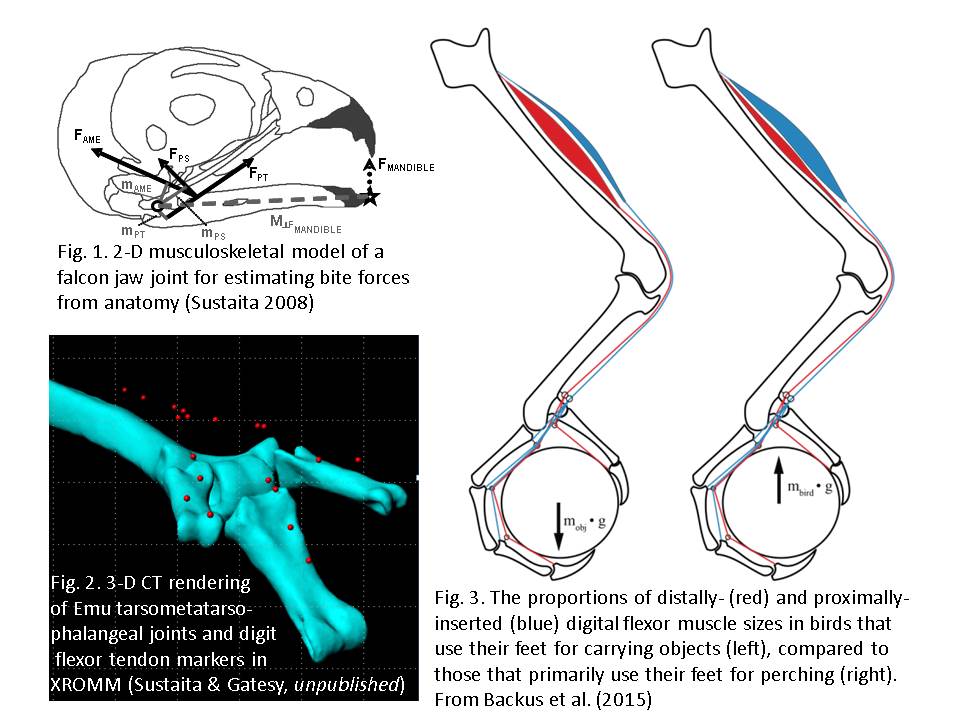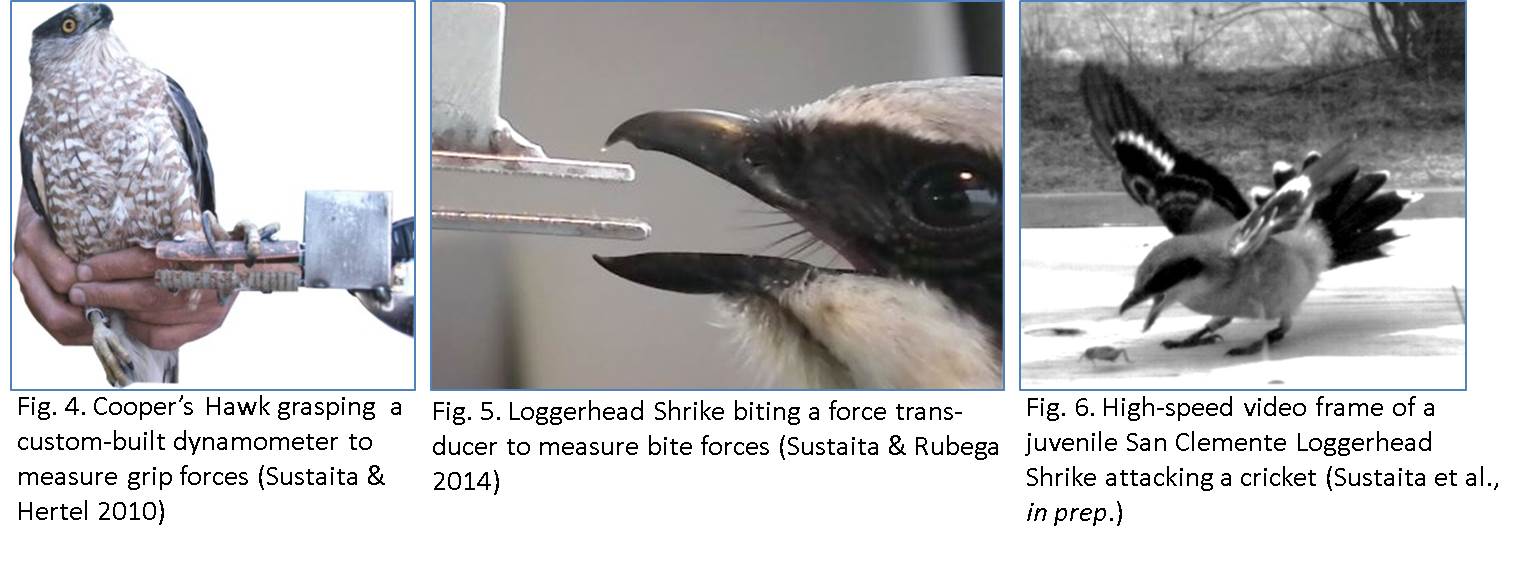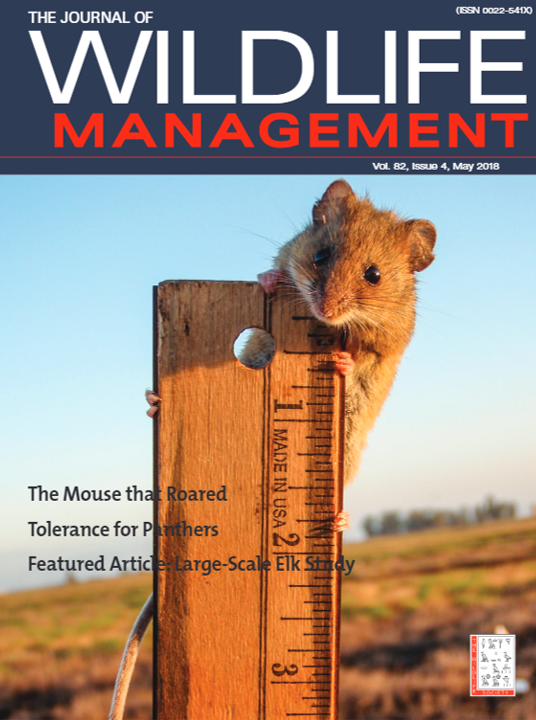 myCSUSM
myCSUSMAbout Diego Sustaita
I am fundamentally interested in ecomorphology, the study of an organism’s form and function in the context of its natural environment. Over the past few decades, the quintessential biological paradigm, “form means function,” has been reconfigured to address how variation in form translates into an organism’s physical ability to perform its ecological role. My research runs the gamut from evolutionary morphology to applied wildlife ecology. My research questions revolve around understanding how animals (mostly birds and small mammals) are “built” to do what they do in nature (mostly feeding and locomotion), through measurements of their morphology and performance.

Education
- Postdoctoral Research & Teaching Associate, Brown University, 2016
- Ph.D. Ecology & Evolutionary Biology, University of Connecticut, 2013
- M.S. Biology, California State University, Northridge, 2005
- B.S. Biology, California State University, Northridge, 2000
Research
Understanding morphological variation in a functional context, guided by biomechanical principles. I used this approach to learn how musculoskeletal differences in the jaws and hindlimbs between hawks and falcons explained differences in their biting and grasping behavior (Fig. 1); to investigate the functional significance of the trifurcated deep digital flexor tendons of emu toes using X-ray Reconstruction of Moving Morphology (Fig. 2); and to understand the roles of proximally and distally-inserted digit flexor tendons in perching and grasping objects (Fig. 3).

Understanding functional performance capabilities, by quantifying the forces (kinetics) and movements (kinematics) of live animals. I use force sensors to measure the bite and grip strength of hawks, falcons, and shrikes (predatory songbirds) to understand how differences in jaw, beak, and foot morphology among species and individuals relate to differences in performance (Figs. 4, 5). I also use high-speed video to quantify prey-handling movements in captive shrikes (in collaboration with the San Diego Zoo Institute for Conservation Research and the U.S. Navy; Fig. 6), in an effort to understand the ontogenetic effects of bill shape on feeding performance (Sustaita et al. in prep.).

Understanding foraging behavior, to relate performance capabilities to actual patterns of prey resource use in the wild. I use standard behavioral observation techniques, coupled with carbon and nitrogen stable isotope analysis of consumer and representative prey tissues, to assay predator feeding habits (Fig. 7). This step places information gleaned from the previous two approaches into an ecological context, ultimately to uncover the selective basis for phenotypic variation.

Contributing to wildlife conservation and management. My research with the California Department of Fish & Wildlife (CDFW) regarding habitat use and population demography of the salt marsh harvest mouse addresses the management of endangered species (Fig. 8). On-going research efforts include the development of morphological tools for discriminating between similar harvest mouse species in the field, and establishing fine-scale vegetation-mouse associations.

Courses
- Biol 212: Evolution
- Biol 354/354L: Principles of Ecology/ Princ of Ecol Lab
- Biol 506/506L: Avian Biology/ Laboratory & Field Studies in Avian Biology
- Biol 401/401L: Comparative Vertebrate Anatomy/ Comp Vert Anat Lab
- Biol 596: Special Topics: Mammalogy
- Biol 596: Special Topics: Seminar in Ecological Morphology
Publications
Sustaita D, Wulf G†, Sethuraman A. In press. Phenotypic differentiation despite gene flow: beak morphology, bite performance, and population genetics of Loggerhead shrikes (Lanius ludovicianus). Ecology & Evolution.
Colwell RK, Rangel T, Fucikova K, Sustaita D, Yanega GM, Rico-Guevara A. 2023. Repeated evolution of unorthodox feeding styles drives a negative correlation between foot size and bill length in hummingbirds. The American Naturalist Volume 202: 699-720.
Holmes J, Sustaita D, Hertel F. 2022. Geometric morphometric analysis of the humerus in New and Old World vultures. Journal of Morphology 283: 379-394.
van Heteren AH, Wroe S, Tsang LR, Mitchell DR, Ross P, Ledogar JA, Attard MRG, Sustaita D, Clausen P, Scofield RP, Sansalone G. 2021. New Zealand’s extinct giant raptor (Hieraaetus moorei) killed like an eagle, ate like a condor. Proc. R. Soc. B 288: 20211913.
McElroy EJ, Sustaita D, McBrayer LD. 2020. Applied functional biology: linking ecological morphology to conservation and management. Integrative & Comparative Biology 60: 402-412.
Bleich VC, Blum ME, Shoemaker KT, Sustaita D, Holl SA. 2019. Habitat selection by bighorn sheep in a mesic ecosystem: the San Rafael Mountains, California, USA. California Fish and Game 105:205-224.
Rico-Guevara A, Sustaita D, Bright JA, Corbin CE, Gussekloo SWS, Olsen A, and Dudley R. 2019. Chapter 17: Feeding in Birds: Thriving in Terrestrial, Aquatic, and Aerial Niches. In Feeding in Vertebrates: Evolution, Morphology, Behavior, Biomechanics (Bels V, Whishaw IQ, Editors) - Springer International Publishing AG, Cham, Switzerland.
Sustaita D, Gloumakov Y, Tsang LR, Dollar AM. 2019. Behavioral correlates of semi-zygodactyly in Ospreys (Pandion haliaetus) based on analysis of internet images. PeerJ 7:e6243 DOI 10.7717/peerj.6243.
Sustaita D, Rubega MA, Farabaugh SM. 2018. Come on baby, let’s do the twist: the kinematics of killing in loggerhead shrikes. Biology Letters 14 20180321 DOI: 10.1098/rsbl.2018.0321.
Sustaita D, Rico-Guevara A, and Hertel F. 2018. Chapter 15: Foraging behavior. In Ornithology: Foundation, Analysis, and Application (Morrison ML, Rodewald AD, Voelker G, Colón MR, and Prather JF, Editors). Johns Hopkins University Press, Baltimore, Maryland.
Sustaita D, Brown SK, Barthman-Thompson L, Estrella S, Patterson L, Finfrock PQ, Villablanca FX. 2018. Distinguishing between northern salt marsh and western harvest mice. Journal of Wildlife Management 82:723-733 DOI: 10.1002/jwmg.21421. [And Cover].
Backus SB, Sustaita D, Odhner LU, Dollar AM. 2015. Mechanical analysis of avian feet: multiarticular muscles in grasping and perching. Royal Society Open Science 2: 140350; DOI: 10.1098/rsos.140350.
Hertel F, Maldonado JE, Sustaita D. 2015. Wing and hindlimb myology of vultures and raptors (Accipitriformes) in relation to locomotion and foraging. Acta Zoologica 96: 283-295.
Sustaita D, Rubega MA. 2014. The anatomy of a shrike bite: bill shape and bite performance in Loggerhead Shrikes. Biological Journal of the Linnean Society 112: 485-498.
Sustaita D, Owen CL, Villarreal JC, Rubega MA. 2014. Morphometric tools for sexing loggerhead shrikes in California. The Southwestern Naturalist 59: 560-567.
Burgio KR, Rubega MA, Sustaita D. 2014. Nest-building behavior of Monk Parakeets and insights into potential mechanisms for reducing damage to utility poles. PeerJ 2:e601; DOI 10.7717/peerj.601.
Sustaita D, Pouydebat E, Manzano A, Abdala V, Hertel F, Herrel A. 2013. Getting a grip on tetrapod grasping: form, function, and evolution. Biological Reviews 88: 380-405.
Sustaita D, Quickert PF, Patterson L, Barthman-Thompson L, Estrella S. 2011. Salt marsh harvest mouse demography and habitat use in Suisun Marsh, California. Journal of Wildlife Management 75: 1498-1507.
Sustaita D, Hertel, F. 2010. In-vivo bite and grip forces, morphology, and prey-killing behavior of North American accipiters (Accipitridae) and falcons (Falconidae). Journal of Experimental Biology 213: 2617-2628.
Sustaita D. 2008. Musculoskeletal underpinnings to differences in killing behavior between North American accipiters (Falconiformes: Accipitridae) and falcons (Falconidae). Journal of Morphology 269: 283-301.






